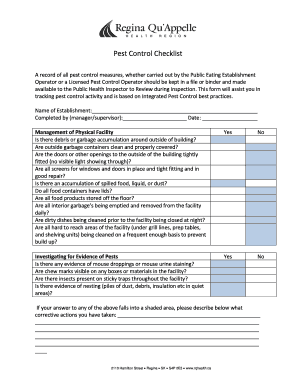Is your home being taken over by pesky critters? Don’t fret, because help is on the way! In this article, you will find a comprehensive checklist that will guide you through the process of preparing your home for pest control. Whether you’re dealing with ants, spiders, or any other unwanted guests, following these simple steps will ensure that your home is ready for the professionals to work their magic. So say goodbye to those creepy crawlies and get ready to reclaim your space!
Interior Preparation
Clear Clutter
Before the pest control treatment, it is important to clear any clutter in your home. Clutter can provide hiding spots for pests and make it difficult for the pest control professionals to effectively treat your home. Take some time to declutter your living spaces, including bedrooms, living rooms, and especially areas where pests are commonly found such as kitchens and bathrooms. This will not only make the treatment more effective but also make your home a more pleasant place to live.
Seal Cracks and Crevices
Pests can enter your home through even the smallest cracks and crevices. To prevent this, it is important to seal up any gaps in walls, floors, and other areas where pests may be able to enter. Use caulking or weatherstripping to seal these openings, paying close attention to areas around windows, doors, pipes, and electrical outlets. By sealing these entry points, you can greatly reduce the chances of pests finding their way into your home.

Clean and Vacuum
A clean home is less attractive to pests, so it is important to thoroughly clean your living spaces before the pest control treatment. Vacuum carpets, rugs, and upholstery to remove any eggs, larvae, or adult pests that may be hiding in these areas. Pay special attention to areas where food crumbs or spills may have accumulated, as these can attract pests. Additionally, mop hard floors and dust surfaces to remove any potential hiding spots for pests.
Store Food Properly
Proper food storage is essential in preventing pest infestations. Before the pest control treatment, ensure that all food items are stored in airtight containers to minimize the chances of pests getting access to them. This includes pantry items, pet food, and even fruits and vegetables. By eliminating potential food sources, you can make your home less attractive to pests and help prevent future infestations.

Remove Pets and Fish Tanks
During the pest control treatment, it is important to remove pets and fish tanks from the treatment area. The chemicals used in pest control treatments can be harmful to pets and fish, so it is best to relocate them to a safe area until the treatment is complete. Consult with your pest control professional for specific instructions on how to properly remove and protect your pets during the treatment.
Cover or Remove Valuables
To protect your valuables from any potential damage during the pest control treatment, it is advisable to cover or remove them from the treatment area. This includes items such as electronics, artwork, and delicate furniture. Use plastic covers or sheets to protect larger items or consider temporarily moving smaller items to a different room. By taking these precautions, you can ensure that your valuables are safe from any potential harm.

Protect Electrical Appliances
Electrical appliances can be attractive hiding spots for pests, so it is important to take steps to protect them during the pest control treatment. Before the treatment, make sure to unplug all electrical appliances and cover them with plastic sheets or bags. This will help prevent any chemical residues from potentially damaging your appliances. Once the treatment is complete, thoroughly clean and inspect the appliances before plugging them back in.
Turn Off HVAC Systems
During the pest control treatment, it is advisable to turn off your HVAC (Heating, Ventilation, and Air Conditioning) systems. This will prevent the spread of any chemical residues throughout your home through the air ducts. Additionally, turning off the HVAC systems will help create a more controlled environment for the treatment, ensuring its effectiveness. Remember to turn off the systems before the pest control professionals arrive and leave them off for the duration of the treatment.

Remove Bedding and Clothing
To protect your bedding and clothing from potential chemical exposure, it is recommended to remove them from the treatment area before the pest control professionals arrive. Place them in sealed bags or cover them with plastic sheets to prevent any potential contamination. Once the treatment is complete and the chemicals have dried, you can safely return the bedding and clothing to their original places.
Prepare a Safe Space for Pets
During the pest control treatment, it is important to provide a safe space for your pets away from the treatment area. This will help minimize their exposure to any chemical residues and ensure their well-being. Set up a designated area in a different room where your pets can stay comfortably until the treatment is complete. Make sure to provide them with food, water, and any necessary bedding or toys to keep them comfortable during this time.


I am Randy, the author behind PestControld.com. Drawing from decades of experience, I aim to provide valuable insights, expert advice, and practical recommendations to help you make informed decisions when assessing viable pest control solutions.